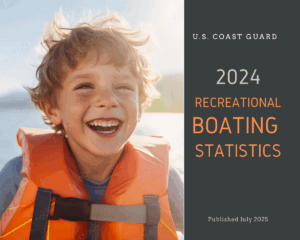
The Navigation Rules are much like the rules of the road on the highway. They establish a consistent way to navigate safely and avoid collisions when two boats are crossing paths, are on course to meet head-on, or when one boat wishes to overtake another.
Since collisions are the number one type of accident on the water, boaters should remember these basic navigation rules. For basic awareness training on many of the “Rules of the Road” go to boatoncourse.com.
Please note, navigation rules generally do not use the term “right of way.” Instead vessels are directed to stay out of each others way. A vessel required to stay out of the way of another vessel is called the “give-way” vessel and the one that should maintain its course and speed is the “stand-on” vessel.
Post a lookout. Designate someone to watch for dangers that may come from any direction.
Maintain a safe speed. Except where speed is restricted by regulation or the waterway is marked by a “No Wake” or “Slow Speed” Aid, you must judge “safe speed” for yourself, taking into account visibility, vessel traffic, your boat’s ability to maneuver, and the weather conditions.
Avoid a collision. The Rules of the Road include the actions to take when encountering another vessel on the water. Some of the most common situations you may encounter are: 1) overtaking, 2) meeting head on, and 3) crossing the bow of another boat. In each case, the boat designated as the “give-way” vessel is required to yield to the other boat, while the boat designated as the “stand-on” vessel should maintain its course and speed. When meeting another boat, a boat operator is not required to “make early and substantial changes to their course” unless there is a risk of collision (reciprocal or nearly reciprocal) – they may be able to just stay on course. If there is a risk of collision, then the boat operator must change the course and/or speed of the boat.
- Overtaking: The give-way vessel can pass on either side of the stand-on vessel, but must remain well clear of that vessel.
- Meeting head on: When meeting another vessel head on, a port-to-port passing is preferred. Passing starboard-to-starboard is acceptable when necessary.
- Crossing situation: In a crossing situation, the give-way vessel must act to avoid a collision. This may include altering its course to pass astern of the stand-on vessel or slowing down or both. The stand-on vessel should maintain its course and speed.
There is much more to the navigation rules than can be covered here.
More Information
Federal Navigation Regulations by subject
The Navigation Center for Excellence
USCG’s Division of Boating Safety
USCG Navigation Rules and Regulations Handbook



